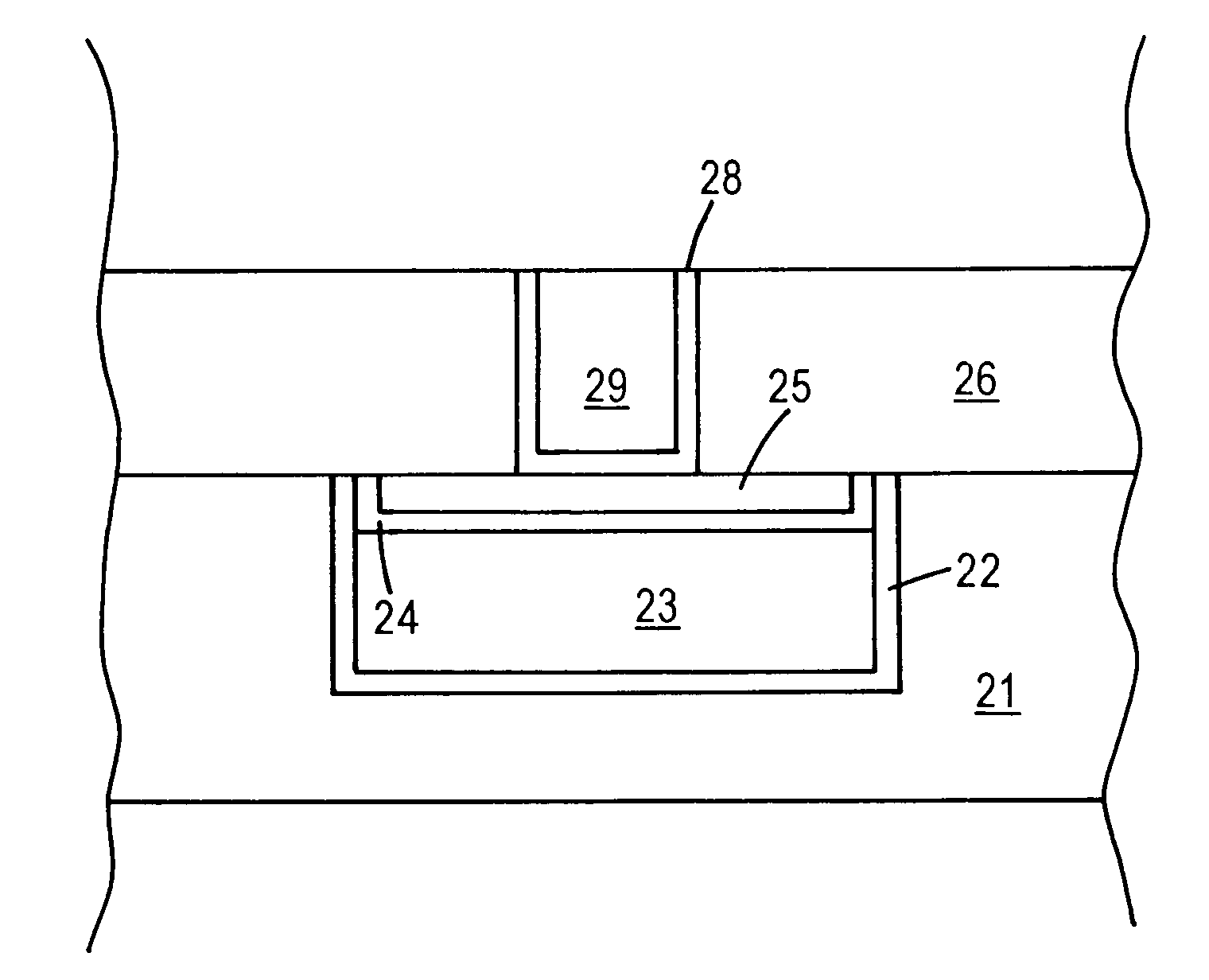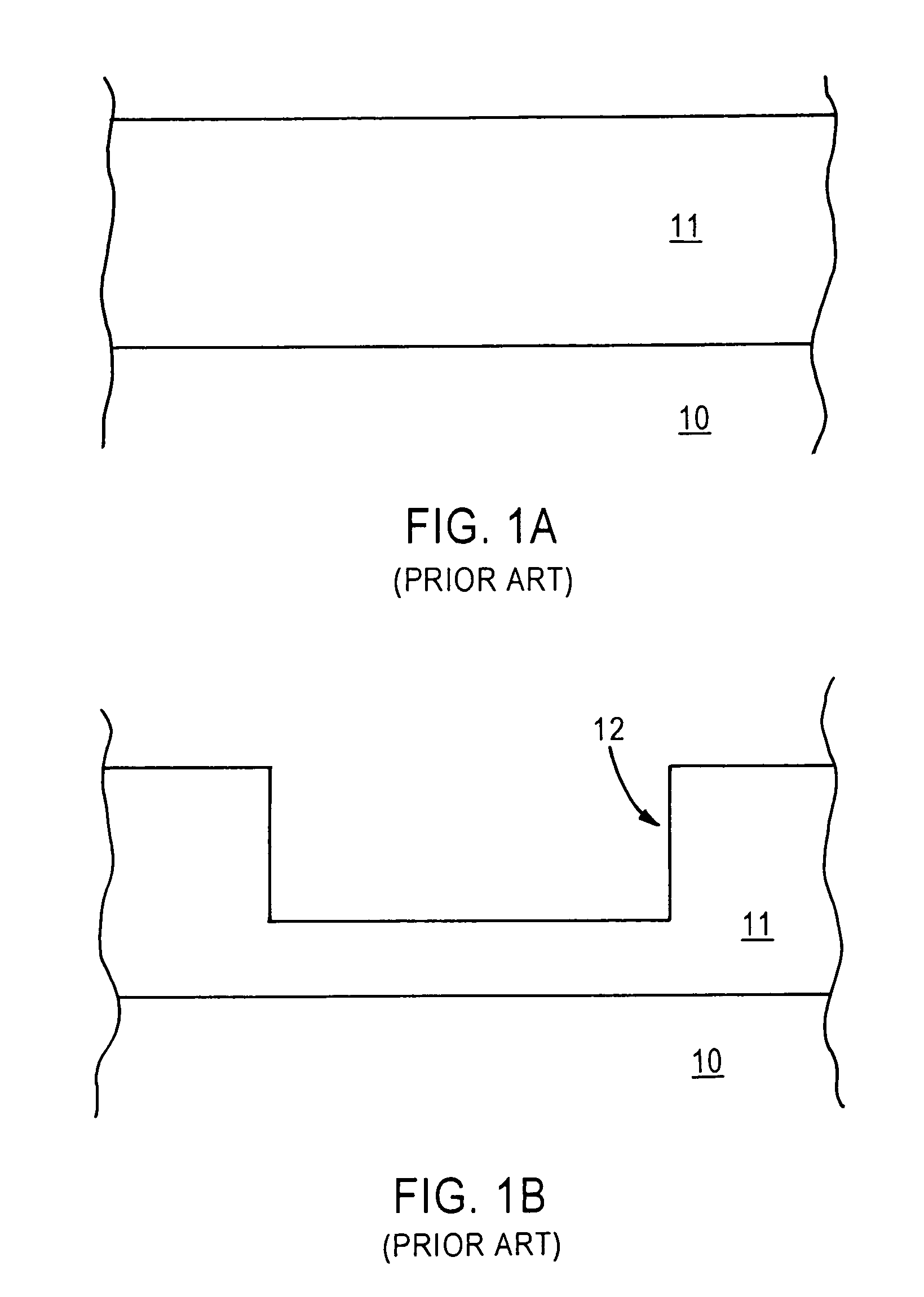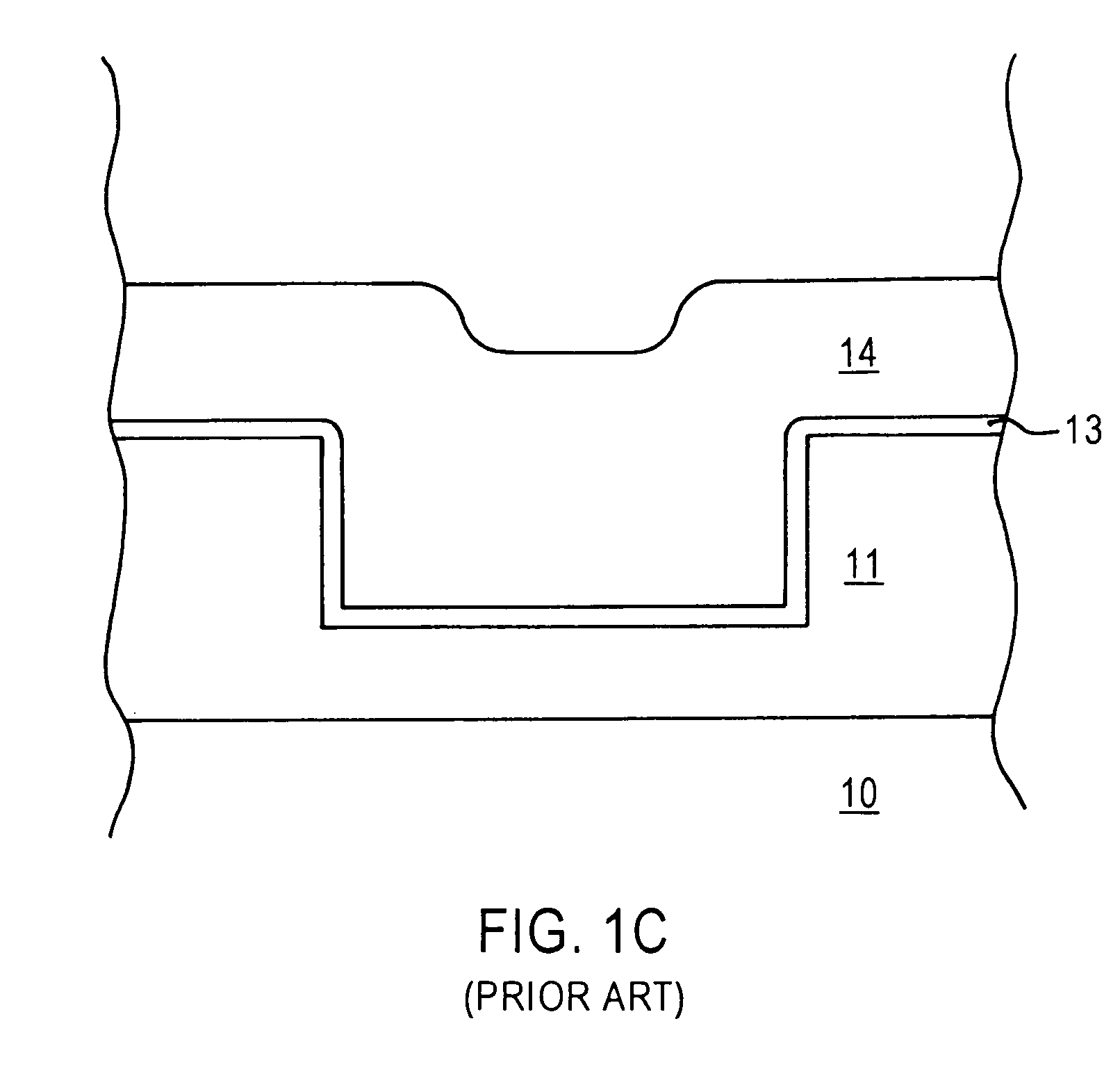Composite tantalum nitride/tantalum copper capping layer
a tantalum nitride and copper capping layer technology, applied in semiconductor devices, semiconductor/solid-state device details, electrical apparatus, etc., can solve the problems of escalating requirements that are difficult to meet, rc delay caused by interconnect wiring increases, reliability issues have evolved, etc., to achieve high reliability, reduce interconnect capacitance, the effect of improving the electromigration and stress migration performan
- Summary
- Abstract
- Description
- Claims
- Application Information
AI Technical Summary
Benefits of technology
Problems solved by technology
Method used
Image
Examples
Embodiment Construction
[0020]Conventional methodology for fabricating semiconductor devices with capped inlaid Cu are accompanied by via resistance, electromigration and stress migration problems. In copending application Ser. No. 10 / 791,904, filed on Mar. 4, 2004 such problems are addressed by forming a composite capping layer comprising a thin layer of beta (β)-Ta on an upper surface of the inlaid Cu, a thin layer of tantalum nitride on the layer of β-Ta and a layer of α-Ta on the thin titanium nitride layer. The resulting interconnect structure exhibits reduced via resistance, reduced voiding under the via, improved stress migration performance and improved electromigration performance. Further, by avoiding the need to remove the Ta layer, which in itself is difficult, slow and unproven, manufacturing throughput is increased, manufacturing costs decreased, beveling of via corners avoided and Cu contamination reduced.
[0021]The present invention constitutes an improvement over the invention disclosed on ...
PUM
 Login to View More
Login to View More Abstract
Description
Claims
Application Information
 Login to View More
Login to View More - R&D
- Intellectual Property
- Life Sciences
- Materials
- Tech Scout
- Unparalleled Data Quality
- Higher Quality Content
- 60% Fewer Hallucinations
Browse by: Latest US Patents, China's latest patents, Technical Efficacy Thesaurus, Application Domain, Technology Topic, Popular Technical Reports.
© 2025 PatSnap. All rights reserved.Legal|Privacy policy|Modern Slavery Act Transparency Statement|Sitemap|About US| Contact US: help@patsnap.com



